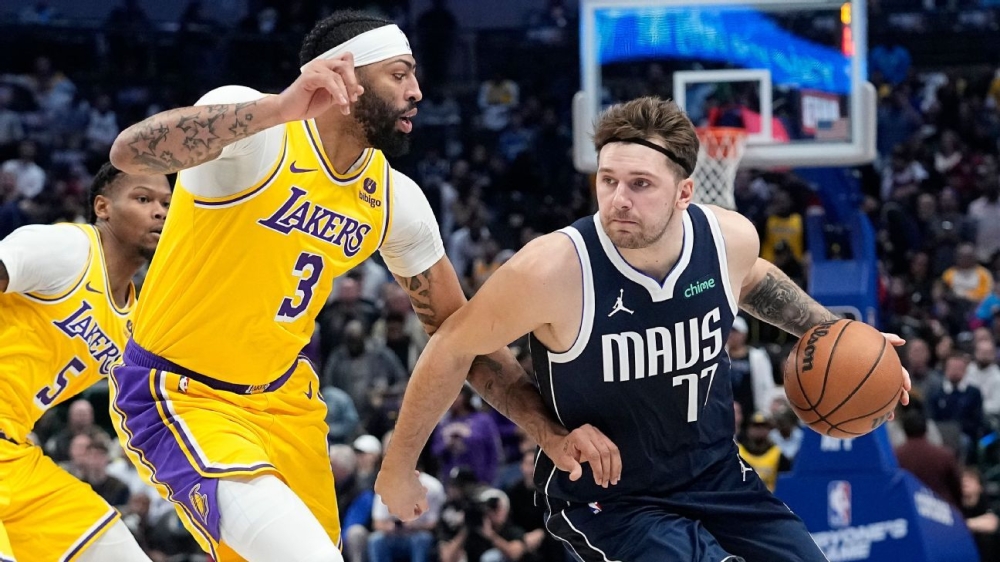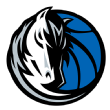Luka Doncic-Anthony Davis trade grades – Winners, losers, what’s next

The Dallas Mavericks and Los Angeles Lakers stunned the NBA early Sunday morning on the east coast with a swap of All-Stars that has massive implications for this season and beyond.
A year after leading the NBA in scoring and finishing third in MVP voting en route to his first NBA Finals appearance, Luka Doncic is headed to the Lakers as their next great superstar. In exchange, Dallas got All-Star center Anthony Davis, the Lakers’ leader in points, rebounds and blocks per game, as well as promising guard Max Christie and the Lakers’ 2031 first-round pick.
Because of the NBA’s salary-cap rules, the trade also required the Utah Jazz as a third team, getting guard Jalen Hood-Schifino and second-round picks.
Let’s try to wrap our heads around a trade that truly came out of nowhere to understand what it means for all three teams, including the new directions for the Lakers and Mavs, plus an early look at the LeBron-Luka dynamic in L.A.
The deal
Los Angeles Lakers get:
Luka Doncic
Maxi Kleber
Markieff Morris
Dallas Mavericks get:
Anthony Davis
Max Christie
2029 first-round pick
Utah Jazz get:
Jalen Hood-Schifino
2025 second-round pick (via LA Clippers)
2025 second-round pick (via Dallas)
Grades
 Los Angeles Lakers: A
Los Angeles Lakers: A
If we put every NBA player into a draft today with their current contracts, Victor Wembanyama of the San Antonio Spurs would undoubtedly be the No. 1 pick. Most likely, three-time MVP Nikola Jokic of the Denver Nuggets would go second despite being nearly 30. And then we’d have a tough choice between Doncic and MVP frontrunner Shai Gilgeous-Alexander of the Oklahoma City Thunder for the third spot.
Given that Doncic will turn 26 later this month and has a full season on his contract before a 2026-27 player option, there’s a reasonable argument that he is the most valuable player at the time of being traded in modern NBA history. For the Lakers to land Doncic without even exhausting their supply of draft picks is an incredible coup that sets up the next generation of success for one of the league’s most storied franchises.
In the short term, getting Doncic might not catapult the Lakers into legitimate title contention. After all, Doncic is currently sidelined by a calf strain suffered on Christmas Day, and frankly hadn’t been as effective as Davis when healthy. Although the Lakers still have moves they can make before Thursday’s trade deadline, dealing their starting center for a 6-foot-6 player in return leaves them woefully thin in the middle. And there will undoubtedly be a learning curve when Doncic does join the lineup, displacing LeBron James and Austin Reaves as the Lakers’ primary ballhandler.
Given all those issues, it’s plausible the Lakers’ chances of winning a playoff series this season diminished with the trade. That’s unimportant by comparison to bringing Doncic to L.A. for what could be years to come.
As ESPN’s Bobby Marks noted, Doncic will be eligible for a four-year extension worth nearly $229 million this summer. Alternatively, Doncic could sign a shorter bridge extension of three years and $165 million with a player option for 2028-29 that would allow him to push his salary up to 35% of the cap once he’s attained the 10 necessary seasons of experience.
A Doncic extension would surely take him beyond James’ career, at which point the Lakers will have to find a championship-caliber costar for him. That process will be much easier because of the deal the Lakers negotiated.
Contrast this return with the Davis trade, where the Lakers gave up three promising young players (Lonzo Ball, Josh Hart and Brandon Ingram, who all developed into quality starters or better), the No. 4 pick of the draft, two unprotected first-round picks and a swap. Here, the Lakers gave up one young player (Christie, whose outlook is not as bright as either Ball or Ingram at the time of the Davis trade) and one unprotected draft pick, set to convey when Doncic is age 30.
Remarkably, that leaves the Lakers with their 2031 first-round pick to offer in a future trade for a star, plus swaps in 2026, 2028 and 2030 as well as 2024 first-round pick Dalton Knecht. By this summer, they’ll also be able to swap their 2032 first-round pick. The Lakers will have to be judicious in how they manage those picks, but the cupboard is hardly bare.
The Lakers deserve credit for not overreacting to their recent success. Part of what made the timing of the Saturday night (on the West Coast) blockbuster so shocking was the Lakers just finished an impressive win on ABC over the New York Knicks at Madison Square Garden, bringing them to 8-2 in their last 10 games. At 28-19, the Lakers are only a game out of fourth in the Western Conference.
Despite their recent success, the Lakers have still been outscored on the season. Among the four teams ahead of them in the West standings, they’ve only beaten the Memphis Grizzlies (twice) this season, with a minus-43 point differential in their six games against that group. This team wasn’t a serious contender.
The Lakers might not be this April, either, but adding Doncic gives them a far more realistic path to the next great Lakers team.
 Dallas Mavericks: F
Dallas Mavericks: F
First, let’s acknowledge I’ve made a habit of betting against Mavericks trades to my detriment. I disliked the risk of bringing in Kyrie Irving months before he would become an unrestricted free agent, but Irving re-signed with Dallas rather than joining the Lakers — now an even more remarkable sliding-doors moment — and has been terrific for the Mavericks.
At last year’s trade deadline, I thought Dallas took too much risk for too little benefit by dealing a first-round pick and a swap to get Daniel Gafford and P.J. Washington. Adding those two starters ultimately helped the Mavericks reach the NBA Finals.
Of course, the whole reason those risks were worthwhile for Dallas was improving the chances of extending Doncic beyond his current contract. Now that the Mavericks have traded him for a player nearly six years older, they’re willingly putting themselves on the high wire yet again.
Don’t take my grade as a dismissal of Davis, who earned one of my votes to start the All-Star Game in the Western Conference frontcourt this season. Although Davis hasn’t been quite as dominant defensively as when he finished second in Defensive Player of the Year voting in 2019-20 and the Lakers won the championship, his 30% usage rate is his highest with the Lakers and has come with only modest decline in terms of efficiency.
The biggest issue here is simply the aging curve. As he approaches his mid-30s, Davis is likely to see his production decline just as Doncic is reaching his peak years. By 2027, when Dallas will send a top-2 protected pick to the Charlotte Hornets from the Washington deal, Davis will be 34. By 2030, when the last of the Mavericks’ pick obligations (a swap with the San Antonio Spurs) conveys, Davis will be 37. It’s probable Davis will still be a good player by then, perhaps even an All-Star. It’s unrealistic to expect he’ll be as good as Doncic.
Secondarily, Davis’ fit in Dallas is questionable. For all his comments about wanting to play with a center (including in a recent interview with ESPN’s Shams Charania), Davis no longer spaces the floor well enough to be maximized alongside a non-shooting big man. Since making 38% of his 3s en route to the Lakers’ title in 2020, Davis is at 26% beyond the arc.
When healthy, the Mavericks already boasted a pair of strong centers in 2023 lottery pick Dereck Lively II and Gafford, who’s excelled as a starter in Lively’s absence due to an ankle stress fracture. Davis will likely go from almost exclusively playing center for the Lakers to almost never doing so in Dallas.
That, in turn, affects Washington. He’s effective driving against slower defenders as a power forward, but now will presumably slide to the wing to make room for Davis. Washington will have an advantage against smaller opponents in the post, but it’s unclear if the Mavericks will have enough spacing in their starting lineup to benefit from it.
Down the road, Dallas can reshape the roster around Davis to a degree, but there’s urgency to win now given the ages of Davis and Irving (33 in March). The Mavericks need things to click quickly.
Adding the healthy Davis should help this season, particularly with Lively and Kleber sidelined. As well as the Lakers had played lately, Dallas had been trending the opposite direction. Fourth in the West at the time Doncic went down on Christmas Day, the Mavericks have fallen to eighth by going 7-14 since, including 5-8 in the 13 games Irving has played. This trade can help Dallas stabilize and have a realistic shot at avoiding the play-in tournament. Still, such a move requires thinking beyond the next four months.
Let’s stipulate the Mavericks were right to be concerned about Doncic’s conditioning, as ESPN’s Tim MacMahon reported, or even that his impressive stats overstated his impact. (That case is getting harder to make with each loss, particularly in the wake of last year’s Finals run.)
If all that is true, Dallas still should have gotten more in return for Doncic. I suppose I can understand wanting to avoid the distraction of open bidding for Doncic — and the Mavericks did manage to keep their negotiations historically quiet — but the only way that works is to use the threat of hanging up the phone to get the best package possible.
It’s inconceivable Dallas didn’t end up with everything of value the Lakers had to offer in this trade, including the 2031 first-rounder, Knecht and pick swaps. Given Doncic’s desirability, the Mavericks should have operated with maximum leverage instead of making a deal short of perfect. Even if things work out perfectly, in an analogy befitting the team’s ownership, Dallas left money on the table.
 Utah Jazz: B
Utah Jazz: B
The Jazz were needed for this deal, their second of the day, because the Lakers can’t take back more salary in a trade than they send out without triggering a hard cap at the lower luxury-tax apron. The Lakers are currently $9.2 million over that apron and just $1.6 million away from the second apron, which is now a hard cap because they had to aggregate salaries in this trade.
Hood-Schifino was expendable after the Lakers declined his third-year option, an atypical outcome for the No. 17 pick of the 2023 draft. Hood-Schifino struggled in limited action as a rookie and had played just two NBA games this season before suffering a hamstring strain that has him on the sidelines.
As part of a rebuild, Utah can look at Hood-Schifino the rest of the season with no obligation beyond that. The Jazz, who will take Hood-Schifino into a trade exception, got a couple of picks likely to land in the back half of the 2025 second round for their trouble.
Source: espn.com
